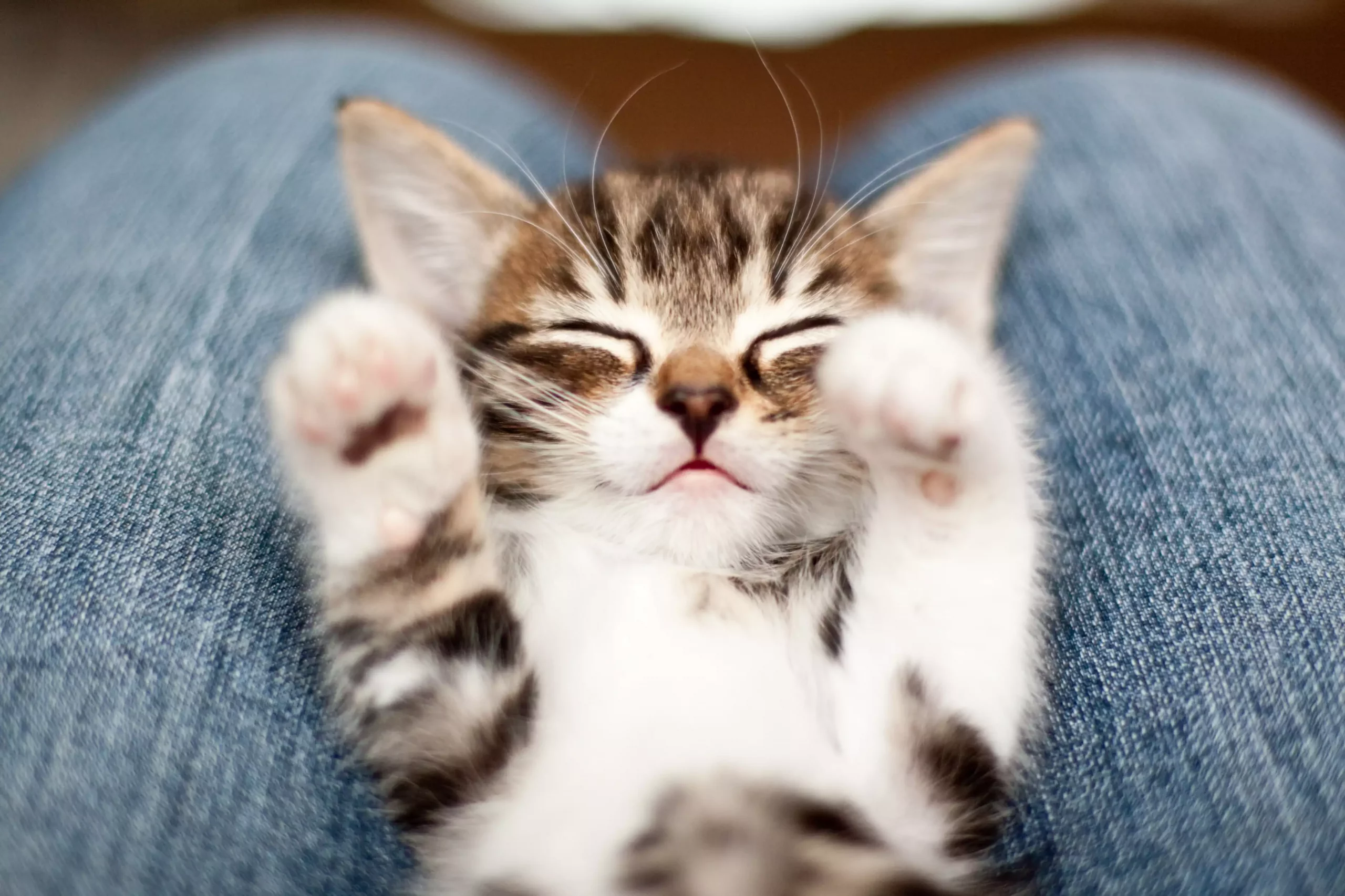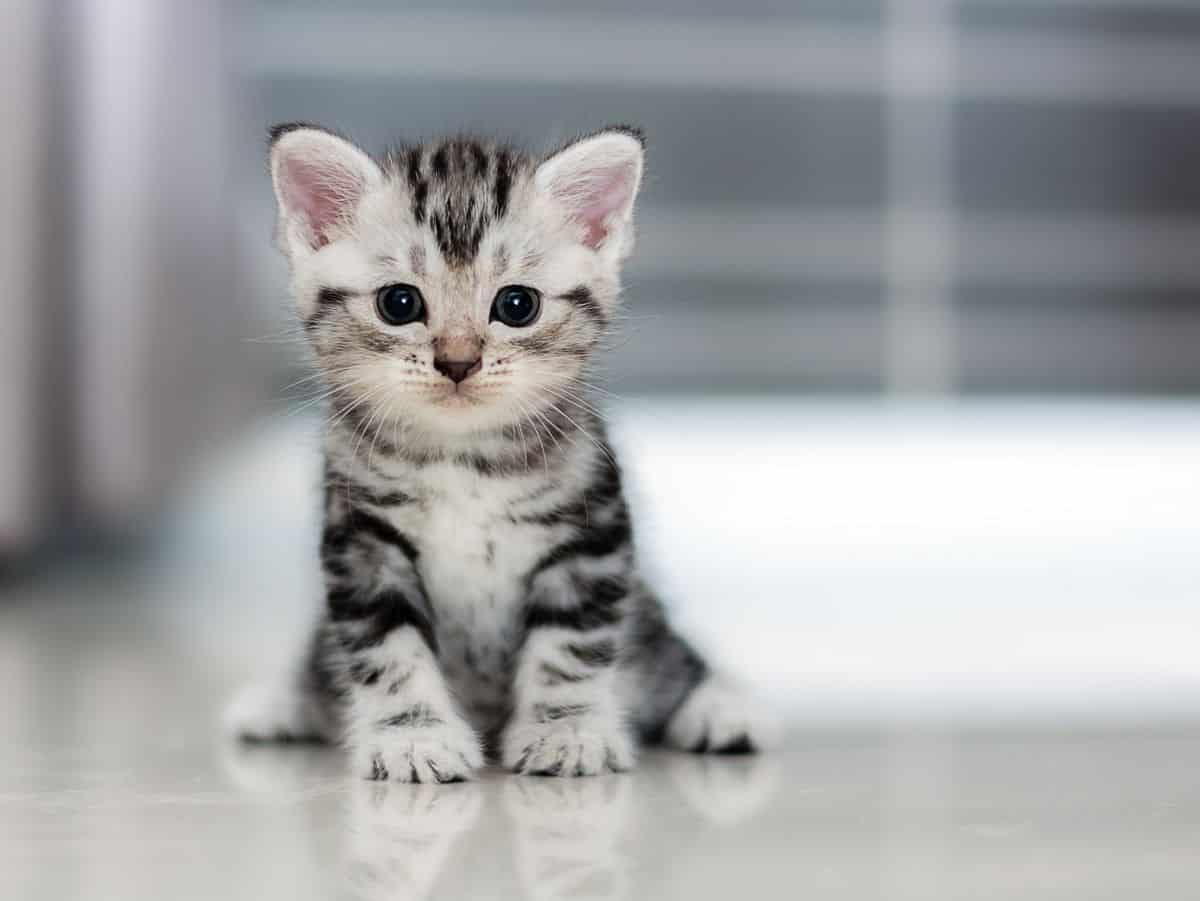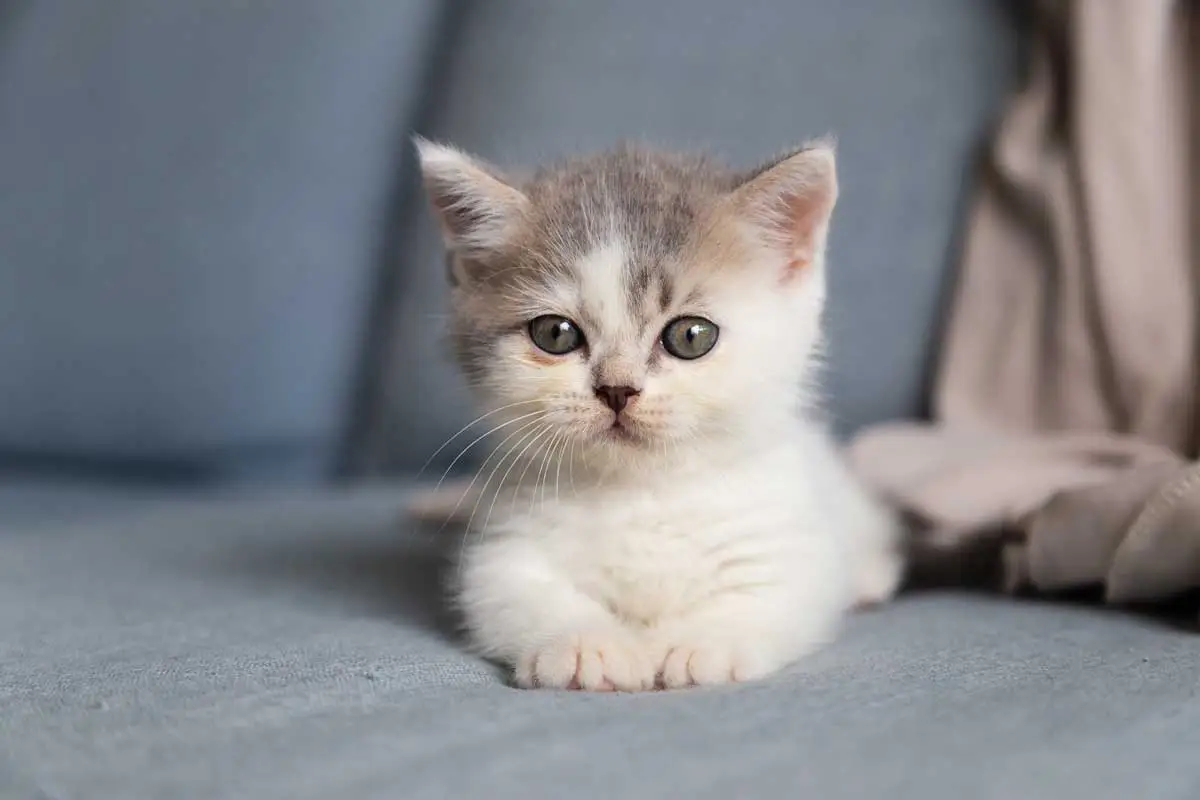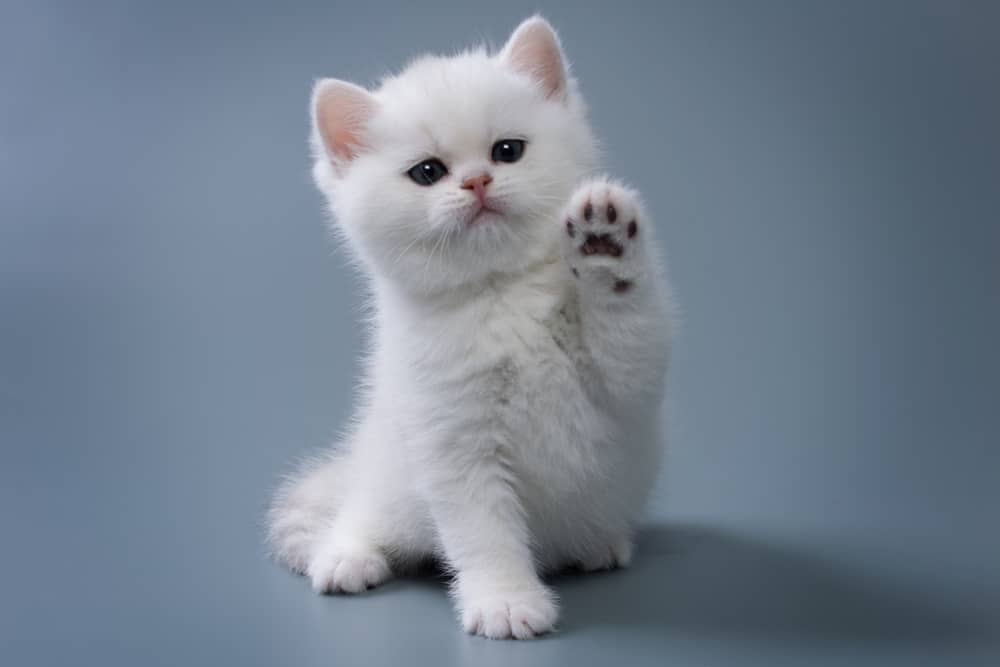Kittens, and cats in general, are considered animals that can eat anything. But that’s not true because cats need a proper and balanced diet to be healthy, just like all animals and humans. Kittens, in particular, require additional care in their diet when they’re young.
Do you plan to get a kitten soon? Perhaps you found a lonely kitten on the street and want to help it? In any case, you’re in luck!
In this article, we’ll thoroughly examine the dietary requirements of cats. We’ll also provide you with a detailed guide on how to feed a kitten at different growth stages and what foods you should not give to a cat.
What Do Kittens Eat?

In general, cats are classified as obligate carnivores. This means that they need specific nutrients such as proteins, amino acids, fats, and vitamins in meat.
Ideally, you should avoid giving raw meat to your cat, as it contains bacteria that can cause food poisoning. Despite that, cats will consume raw meat without issues. In fact, during the early 20th century in London, England, there were dedicated cat’s meat sellers tasked with feeding the stray cats of London.
Nevertheless, you should always strive to provide proper nutrition to your cat through a balanced diet. Generally, commercial cat food can be either dry or wet.
Dry Food
Dry cat food is cooked under high temperature and pressure and is molded into shape. It contains all the necessary nutrients except for some sensitive to high heat, such as vitamins. Once the cooking process is finished, additional vitamins are added, along with fat, to make it tastier.
If you’re feeding your kitten or cat with dry cat food, make sure to give it the proper portions, as dry food contains a lot of carbohydrates to maintain its shape. Too many carbohydrates can lead to obesity and other diseases for cats. Also, ensure your cat drinks a lot of water if it only eats dry food.
Wet Food
Wet cat food generally contains around 80% moisture and is sold in 3, 5 ½, and 13-ounce cans. You can also find it in foil pouches. There are several different types of meat that are included in wet food, such as lamb, beef or chicken, and even fish like tuna.
Portions of canned food are usually smaller and less energy-efficient, so cats and kittens need to eat more of them. You can also utilize a diet consisting of wet and dry food. Supplementing wet food with a small amount of dry food can also benefit your cat’s teeth.
What Homemade Food Can Cats Eat?
Cats can generally eat plenty of homemade foods. In fact, a cat’s diet can solely consist of homemade meals, but you should always consult your veterinarian and a nutritionist to ensure that it’s appropriately balanced. If you want to treat your cat to some homemade meals from time to time, you can give it treats such as:
- Plain cooked chicken or turkey without the skin
- Cooked fish like salmon or tuna
- Seafood such as shrimp
- Cooked eggs
- Some vegetables
- Particular fruit such as bananas or strawberries
The same feeding principles also apply to kittens, provided they are at the right age. But, remember that kittens grow significantly during their early stages of development. Not to mention that they are usually much more energetic than older cats. Thus, they require much more energy and nutrients to be healthy.
How to Feed a Kitten at Different Growth Stages?

Depending on your kitten’s age, you should feed it around 3-4 times daily. As it grows up, you can slowly transition to 2 meals per day for adult cats. Here’s a detailed guide on how to feed a kitten at each different growth stage:
0-4 Weeks Old
During the first four weeks of a kitten’s life, its mother is usually responsible for feeding it properly. If you have an orphan kitten or its mother is sick and can’t feed it, you should use a specialized kitten milk replacement formula.
Since newborn kittens grow rapidly and can’t eat large portions, you need to feed them very frequently. Ideally, you should look to feed it every two to four hours. This feeding schedule will continue until the kitten reaches at least four weeks of age.
4-6 Weeks Old
After the first four weeks, it’s a good idea to start introducing your kitten to solid food along with a milk replacer. Make sure to use high-quality kitten food that has been tested and meets the nutritional requirements set by the American Association of Feed Control Officials (AAFCO).
Start by mixing some kitten food with the milk formula to help the weaning process. Some kittens will want to switch to solid foods much quicker than others. If your kitten doesn’t seem interested in solid food, you can try some different types. Nevertheless, be patient and keep it well fed with kitten formula for it to continue its growth.
6-8 Weeks Old
During this period, your kitten should have stopped entirely nursing and should be eating solid foods. You should always opt for high-quality kitten food regardless if it’s wet or dry. Remember that not all kittens have strong teeth during this growth stage.
Therefore, you should not solely rely on dry food for your kitten’s diet, as it might not be able to chew it properly. Mix up dry and wet food to keep your kitten happy! Also, ensure your kitten has easy access to fresh water, so it stays hydrated.
8 Weeks – 6 Months Old
Kittens usually eat three to four times per day. You can continue feeding your kitten at this rate up until the age of six months. To avoid your kitten being a picky eater, you can start feeding it with different types or brands of cat food from a young age.
Cats usually enjoy a few types of cat food and won’t like it if you try to switch them. To ease the transition, start by incorporating a small amount of the new food into a bowl with the old food. Then, you can gradually decrease the amount of old food and increase the number of new food.
6 Months Old and Beyond
Beyond this point, your kitten will reach adulthood, and its dietary requirements will change. Kitten food is rich in protein and amino acids to aid a kitten’s development. However, adult cats have much less need for these nutrients, which is why adult cat food is more balanced.
Also, after six months, you should slowly reduce the food you give to your cat and eventually transition to two meals per day. This way, you’ll avoid feline obesity and other diseases.
Finally, you should always be careful about what you feed your cat, as some foods can harm both kittens and adult cats.
What Not to Feed Your Kitten

While cats can almost eat any type of food, a few specific ones can be toxic and harmful to them:
Dairy
Even though kittens drink milk during their early stages of growth, they tend to develop lactose intolerance once they become adults. Even small amounts of dairy can cause stomach upset, diarrhea and vomiting.
Some cats might not show obvious lactose intolerance, but they can still have cramps or bloating. Therefore, you should avoid all types of dairy to not cause discomfort to your cat. Even products that are marketed as special milk for cats might cause symptoms to some of them.
Onion & Garlic
Onions and garlic can be toxic to cats. When consumed in large quantities over a prolonged period, it can cause hemolytic anemia in your kitten or cat. If your cat consumed some food that contained onion or garlic, don’t be afraid, as small amounts won’t be an issue.
However, you should generally avoid feeding these vegetables to your cat. If you give homemade food to your kitten often, make sure it’s not cooked with onion or garlic. Also, avoid certain deli meats, as they might contain traces of garlic or onion.
Chocolate
Chocolate can be highly toxic to cats, and you should avoid it altogether. Chocolate contains theobromine, which can cause symptoms such as shaking, salivating, and vomiting in cats.
The darker the chocolate, the more theobromine it contains. Thankfully, cats don’t have sweet taste buds and are therefore not particularly keen on sweet foods.
Grapes & Raisins
Although cats can eat and enjoy fruit, there are a few of them that can cause problems for your cat. Grapes and raisins are some of the most toxic substances for your cat, as they can potentially cause kidney failure.
However, some cats are immune to this issue and can freely eat grapes or raisins. Nevertheless, since you can’t know whether these fruits are toxic to your cat, you should avoid them altogether.
Conclusion
Kittens are some of the most playful pets you can have. To grow properly and always be full of energy, they should follow a balanced diet. Make sure to follow our tips, and always consult an expert vet and a nutritionist to ensure your kitten’s proper diet.
